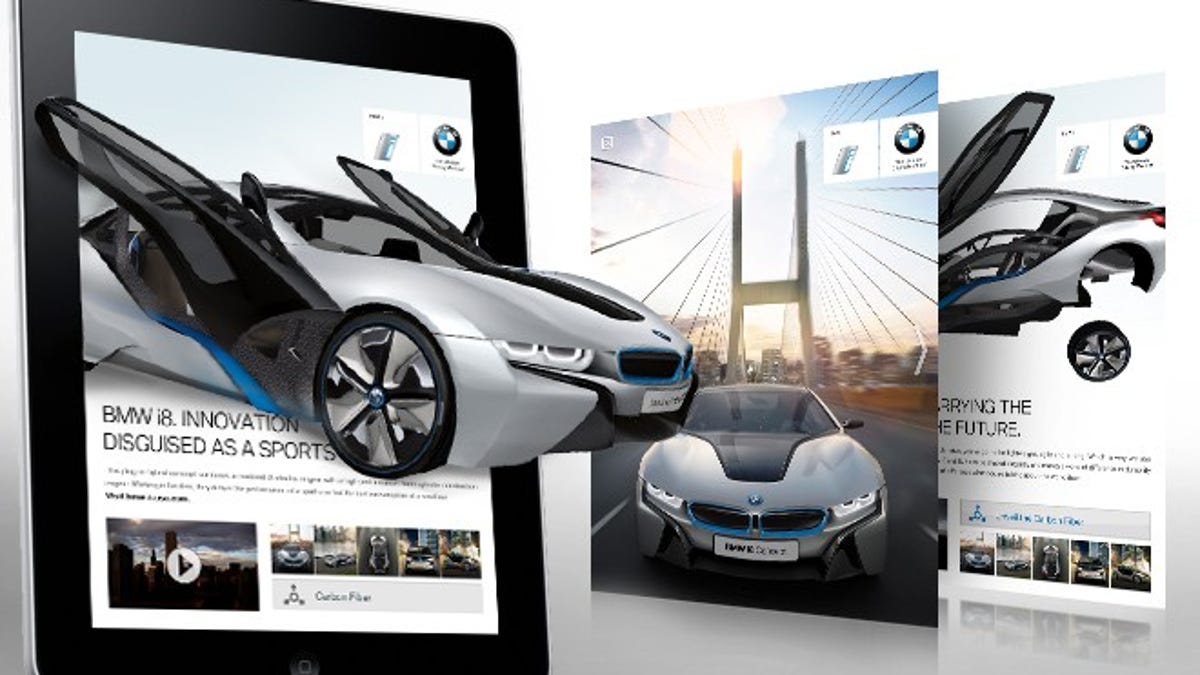How 3D ads will make their way on to your phone
Mobile advertising company Smaato and digital content start-up Cooliris are working to deliver 3D ads to mobile devices. But will people respond?

When it comes to mobile devices, do people care about 3D content?
It's a topic I've been wrestling with since the emergence of the HTC Evo 3D, the first 3D-capable smartphone. I came to the conclusion that it was largely a gimmick, or something that piques your interest but quickly fades away. For some, it's just a bit of headache-inducing flash.
Still, that hasn't stopped more companies from moving into the area. The latest two are media startup Cooliris and mobile advertising company Smaato, which recently said they were partnering to deliver 3D advertisements on mobile devices.
Fortunately, the two aren't exactly talking about images that seemingly pop out of your iPhone. Rather, the service enables the delivery of 3D-rendered images, allowing you to rotate, disassemble, and reassemble that picture in a mobile ad. Since they don't pop off the screen, the images don't need any special displays or glasses. The two plan to show off the technology later this month at the AppNation conference in San Francisco, where the ads will show up on iPhones and iPads.
Cooliris's business unit Adjitsu has a demo up showing off the ability to manipulate a fully rendered BMW. As you can see, it's pretty nifty.
"Rich Media is an important part for the substantial growth of mobile advertising and we see this as a great opportunity for our developers and publishers to maximize their revenue," Smaato CEO Ragnar Kruse said in a statement earlier this month.
Cooliris's Adjitsu will use Smaato, which already delivers mobile ads to a network of advertisers and devices, to expand its presence in Asia and Europe.
"Together we will enable consumers to re-experience brands, products and services like never before," Cooliris CEO Soujanya Bhumkar said.
Still, while it's cool enough technology, I still question how effective it will be.
When I tested the Evo 3D, I was eager to show off the phone's special camera and display to coworkers. They agreed it was cool, but their interest waned fast. I wonder if the same fleeting engagement would occur with Adjitsu's ads.
To be fair, Adjitsu's technology isn't the kind of gimmicky 3D that the Evo 3D, and later on the LG Thrill 4G, employs. The BMW example looks fairly practical if you're interested in buying a new car.
There's been a lot made out of mobile ads in general. Mobile adverting is why Google got into the mobile game with Android in the first place. It's also one of the primary business models driving the apps market.
But I sometimes wonder how effective these banner and display ads are. When playing games, browsing the mobile Web, or watching videos, I largely ignore the ads, or speed through them as quickly as possible.
Maybe 3D-rendered images may cause me to pause a bit. For now, I'm still not sold.

